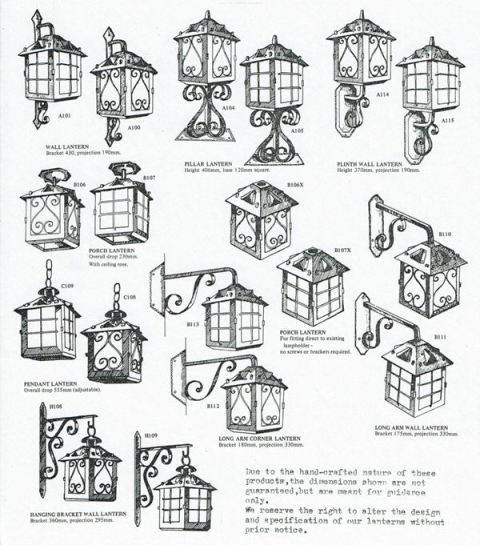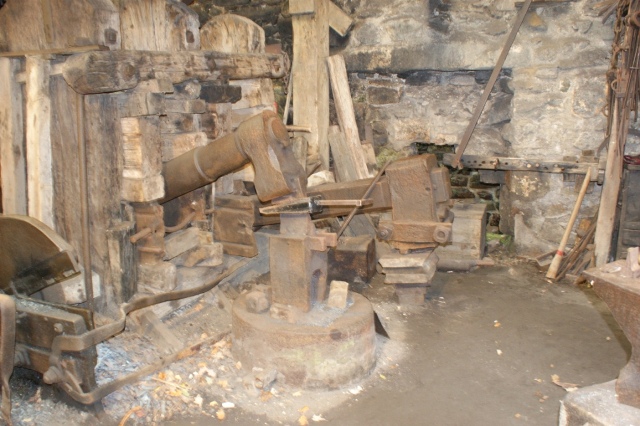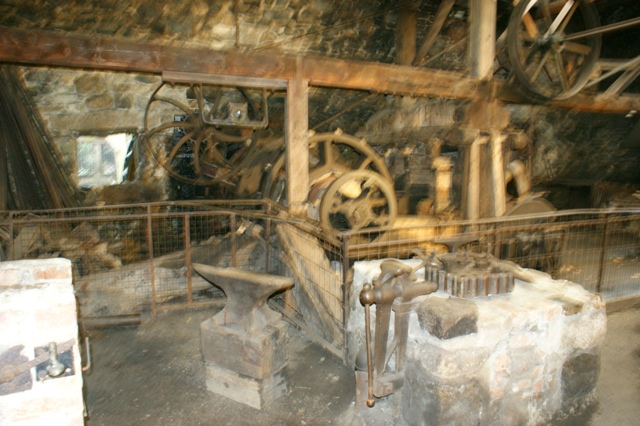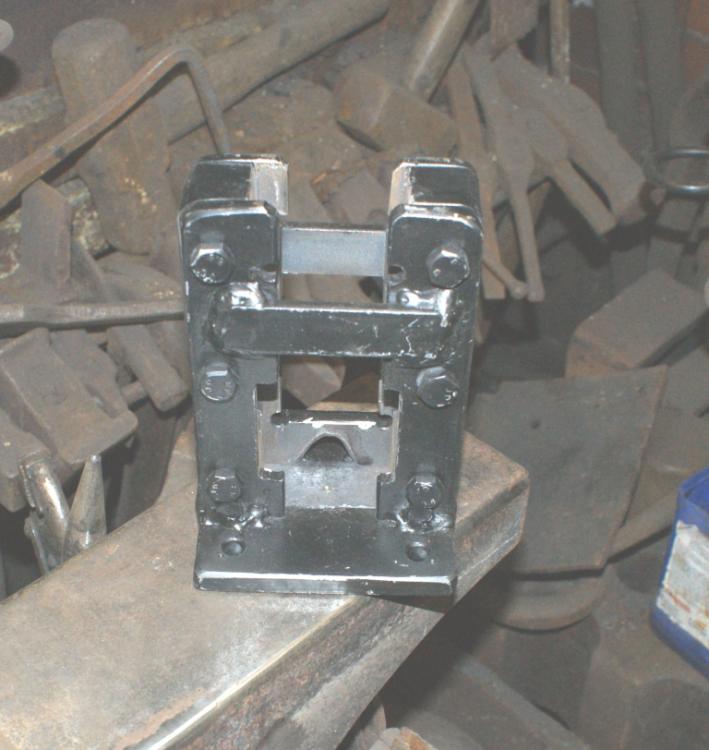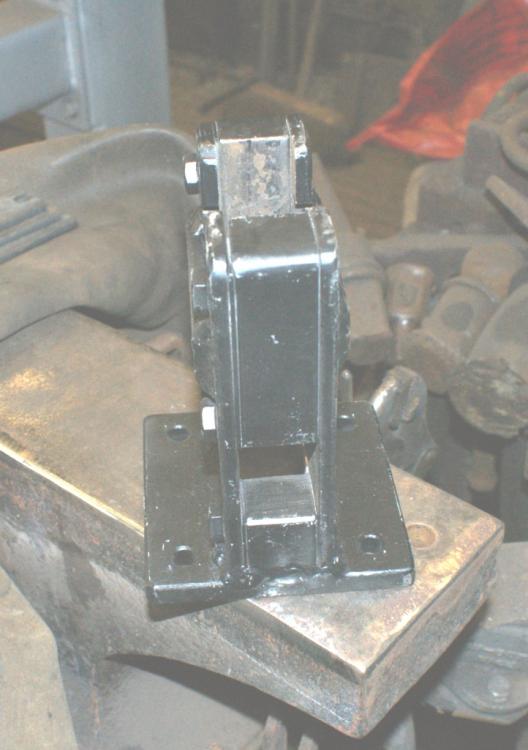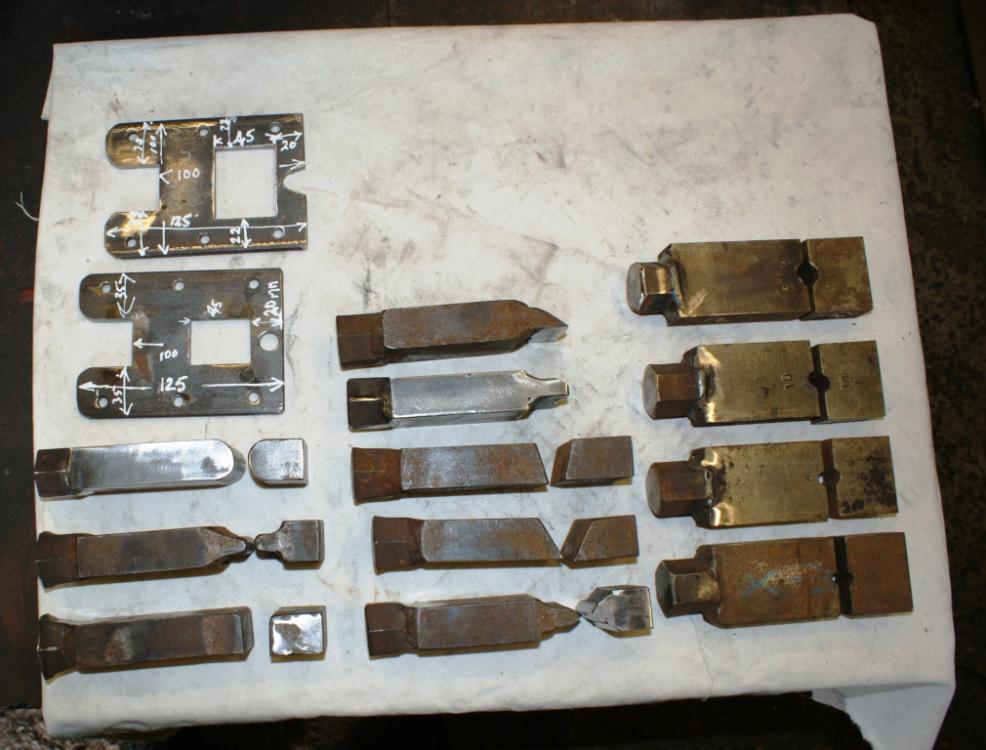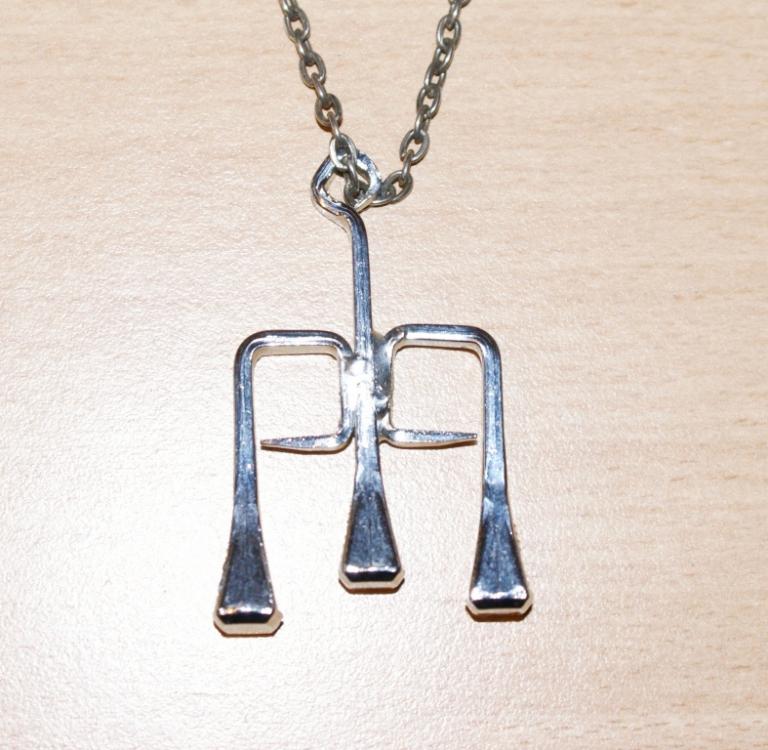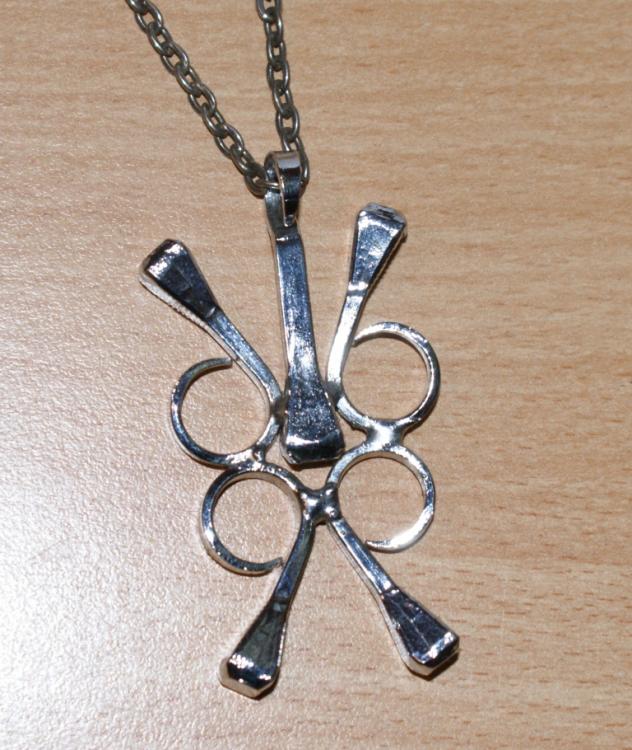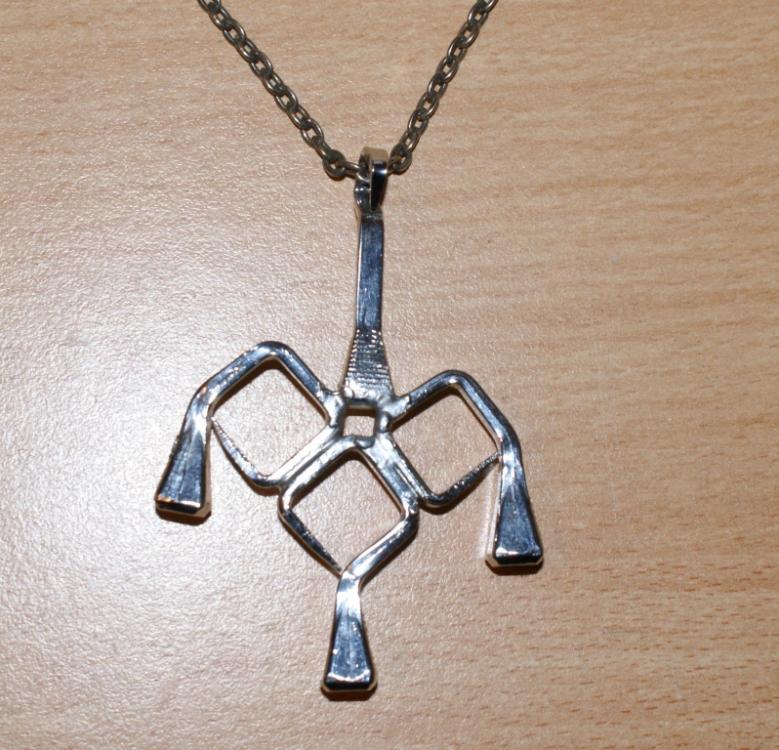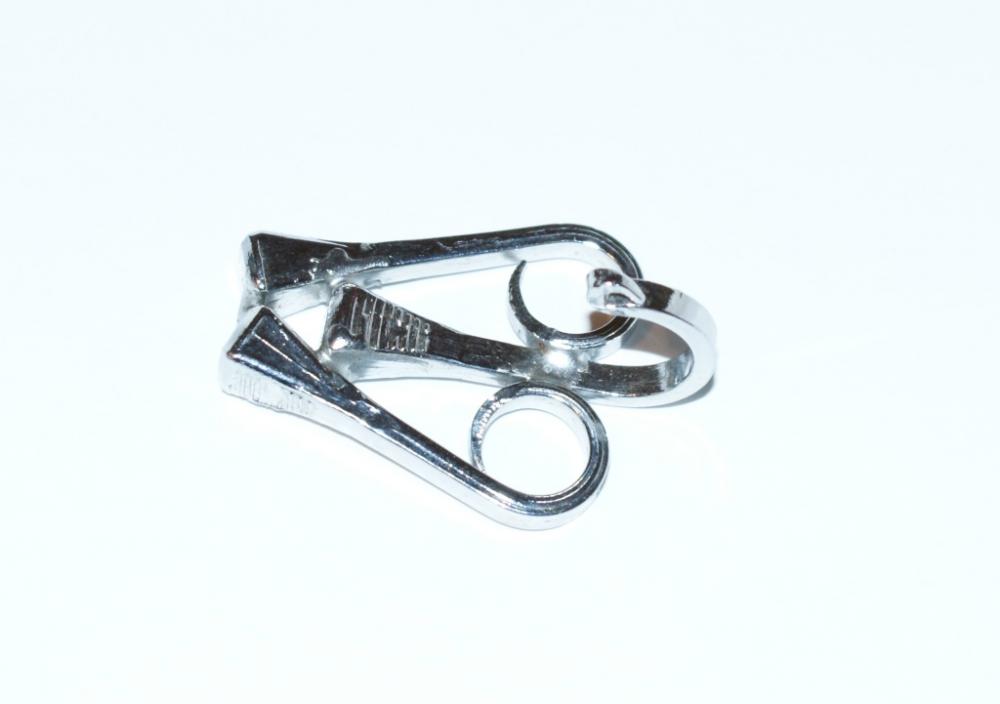-
Posts
3,598 -
Joined
-
Last visited
Content Type
Profiles
Forums
Articles
Gallery
Downloads
Events
Everything posted by John B
-
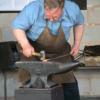
Leg vice mounting
John B replied to blackleafforge's topic in Blacksmiths and Metalworkers Association of the South West UK
Leg vises see some serious action and need to be well anchored and stable to be effective, If you are going to mount leg vises to them, it would be advisable to sink the log into the floor for stability, , A lot depends on how you intend to use them. Some fit in a base socket, whilst others have a foot/plate that you secure to a concrete floor, the top mountings are very varied, Whatever you choose, they want to be positioned where you have quick and clear access around them. Have a good think and consider alternatives before making a decision, -

What kind of steel are these chisels?
John B replied to stan's topic in Chisels, Gouges, Scissors, etc
The top one is what I know as a "cow mouth" or round nose chisel, used for cutting grooves for oilways or similar applications, The "metallugical graticules on my eyeballs" indicate that the material used was EN9, another give away is the octagonal section of the bar stock, this was the international convention for tool steel for many years so that it could be identified by eye when in stock, it also helped by the fact a company I served part of my apprevnticeship manufactured these. Tyzacks can be traced back to early 1700's, and made their own crucible steel, so exacly what that was is open to question, with marks etc the one you have there will be pre second world war as the company amalgamated with Isaac Nash of Stourbridge and name changed in 1942 to form Nash Tyzack Industries. Joseph Tyzack built a connection with the Isle-of-Man Steam Packet Boat Company. The three legged mark, which was required by this customer, was later adopted and registered with the Cutlers’ Company in 1847. The son Thomas was born in 1842 and become the Son in Tyzack and Son, hence the makers stamp with its three legs. 1885 was the time when falling home sales sent them overseas. Members of the family travelled to France, Germany, Russia, Australia, and other Commonwealth countries. About this time their product range was defined by one reference as “various types of single and double shear, blister, and other steels, all kinds of knives for reaping and mowing machines knives for chaff and turnip cutters, knives for paper mills and tobacco works, all sorts of irons for planing, tonguing and carving for woodworking machinery, saws, scythes, forks, files, and other similar goods. ..... Demands have come in, chiefly from New Zealand and Australia, for heavy parts of agricultural and other implements such as plough and share plates of various patterns, plough mould boards plough circular coulters, and skeith plates, harrow discs stripper teeth, cultivator knives, &c. The machine for which the stripper teeth and other parts are supplied is being made in large numbers in these Colonies. Tyzacks had from their earliest operations made their own steel by casting from crucibles using a process similar to Huntsman. These special high-speed steels were marked by the trade name “Nonpareil”. It was an early mark of quality and a constant standard was maintained. Emphasis on quality by means of a works laboratory employing analytical chemists was then an innovation and it enabled processes like tempering to be fully controlled. Hopefully this may help to answer your initial question, well at least for one of them. http://www.iforgeiron.com/topic/26151-what-are-these-chisels-used-for/ may also be useful -
Saturday January 9th 2016 9.00am to 4.30pm sees the first Members Forging Day at Westpoint Forge home of the Blacksmiths and Metalworkers Association of the South West, now that the Guild of Wrought Ironwork Craftsmen of Wessex (AKA Blacksmiths Guild.com) have relocated to pastures new. It is intended to hold a members forging day on the second Saturday of every month for the rest of the year for members old and new to participate and to have their 'smithing problems solved. As this is a new start, we will be holding a general meeting soon for all members or interested parties to come along and make suggestions as to how they would like these forging sessions to be formatted, and to form a small committee to help with the future development of what the BMASW do at Westpoint other than our main function of supporting and putting on the Metalwork Feature at the Devon County Show. www.westpointforge.org.uk or www.blacksmiths-training.org.uk gives further details and dates of other courses and events proposed for this year. Look forward to seeing anyone from this site coming along and participating even if not BMASW members....yet.
-
Hiltsbilt, You may find the pivot boss would be better positioned if you forged the handle rein from the opposite side to the one you have done previously on the jaw end, and not the same side as you seem to have done in the video. Still you got a good pair of working tongs, the next lot will be an improvement as you gain more confidence. Have fun and enjoy.
- 6 replies
-
- blacksmith
- youtube
-
(and 1 more)
Tagged with:
-
Sorry, no pictures available, and it went to auction with most of my other tools when I retired some years ago now, so no chance of getting any. That description is a simple version, the one I made could also accommodate larger sections, but was a little more complicated.
-
I used to do these on a flypress in a jig, the finished item was a right angled bend on an arm supporting an outside lantern, some were quite short mounted as a coach light, others were longer and could be used to mount a lantern on top of or beneath, the tube allowed for wiring to be kept out of view when items fitted in situ. Use your press. make a 2" dia x 1/2" thick disc to fit your press on an extension to allow for depth needed as your top tool, (Gives you 1" inside radius) For the bottom tool, Two pieces of angle iron with round spacing bars to set them parallel just a tad over the 1/2" width of the tube, these spacing bars pitched to fit the tube and top tool, (1/2" + 2" + 1/2") and add the diameter of the spacer bar used to give you the centre dimension for them, Set up with the top tool in the centre of the gap between spacers and secure in position and you should be ready to go. When ready, heat your tube and press to 90 degrees You may have to mount the angles on a couple of pieces of channel if your press does not have an open base to allow for full depth of corner. Hope this makes sense.
-
The higher polish on the finish, the more resistance to rust starting, then wax/oil regularly
-

Copper Roses - My first attempt
John B replied to Dustin Quade's topic in Metal Sculpture & Carvings
Try taking the copper to a higher heat (orange), and then quench in clean cold water, that should help- 10 replies
-

Show me your Bottle Openers!
John B replied to Arbalist's topic in Blacksmithing, General Discussion
I just welded a handle on to an old adjustable wrench I had, I prefer the slotted one, Another alternative is a flat bar with a series of square holes through that fit different size bars, limited by the fact you have to slide it over the end of the bar being twisted, you don't have that problem with the slotted one. Tap wrenches sometimes have problems as the heat gets transmitted into the adjusting screw on the sliding jaw, and they also tend to mar the corners of the workpiece -

Show me your Bottle Openers!
John B replied to Arbalist's topic in Blacksmithing, General Discussion
These are simple twisting aids that may help, you could make something similar that would fit into the pritchel hole on your anvil, a second one can then be used to apply the twist. Hope this is useful -
I believe there is a member on this site who was in a similar programme who may chip in with his take on what happened on the programme he featured in, and where he is now.
-

School Project I'm Doing (Please respond)
John B replied to SomeRandomStudent's topic in Blacksmithing, General Discussion
Blacksmithing is still essential in todays economy, blacksmiths forge metal. What seems to have been overlooked is the actual items in every day use produced by forging,and used in many industries to produce common in use items, surgical equipment, automotive products, etc etc. Due to the nature of forgings, in the forseeable future there will always be a demand for them. Blacksmithing is not just gates, domestic items, railings and blades although most of us seem to be working in that area, but encompasses all the people adjusting metal shapes by hot working, be it press, drop stamps or mechanical hammers. -
Westpoint Forge now has a website with provisional dates for the courses and members days for 2016, the members days dates will be fixed and firm, the other courses may alter due to circumstances and demand as to what the membership would like to see demonstrated. the new website address is www.westpointforge.org.uk
-

Cold cut to hot cut
John B replied to MrDarkNebulah's topic in Hot Cuts, Anvil devils, metal cutting on the anvil.
I would suggest that you can use it as is, or alter it to suit what you want to use it for. Just don't expect to use it as a cold chisel once you have used it on hot materials as the temper will have gone from the cutting edge. If you alter the shape, then it is customary to leave the material in the as forged state to use on hot metal. No need for hardening and tempering. Use and enjoy ! -

Saskatchewan Blacksmithing - Record of Time
John B replied to Kardall's topic in Blacksmithing, General Discussion
Here is a picture of a simple slide valve and ash dump ready to be mounted for a bottom blast hearth. The far hole at the extreme right on this picture I use as a stop by inserting a nut and bolt through (not necessary if size worked out correctly. The inner of the hole on the right is to allow a small amount of air to pass as when we are using coke, if all air is shut off, then fire will go out, nott needed if using coal or charcoal. SLIDE VALVE ASSEMBLY comprising Front/Back plate 100mm 6mm 100mm 2 off Spacers 20mm 6mm 100mm 2 off Slide 80mm 6mm 200mm 1 off Shims to allow slide to operate freely 20mm To suit Drinks can flattened and cut, or card 100mm 2 off Also pictured here is a simple ratchet type handle, easy to work, adjust and repeatable. Hope this is of some use to someone, any further information needed, please ask. -
Just a reminder to all who are interested and able to attend, St Clem's day celebration is this Saturday, November 21st Finch Foundry is located in Devon, at Sticklepath, postcode EX20 2NW for the sat nav settings, The day starts at about 10.00am, and goes on until 4.30pm The water powered machinery will be run and demonstrated periodically throughout the day. Admission is free and there will be other activities taking place for those not so interested in the 'smithing, and there may even be the "firing of the anvil" just to keep you awake. There will be the Great Snail Race as usual for a bit of fun, This entails making a snail (shell, horns and a tail that is free standing) in the shortest possible time from 200mm of 10mm diameter bar which will be supplied. The other competition is to make a candlestickof your own design from metal you supply within two hours. Judging for the competitions will be at 3.30pm, Cooked breakfast and suitable refreshments throughout the day for competitors. I look forward to seeing friends old and new there, it is usually a great day out, and most enjoyable even if the weather is not so good. Apologies for poor picture quality
-
- water power
- competitions
-
(and 1 more)
Tagged with:
-
If you don't take up the option, let me know, would be great for Westpoint Forge so we can show how useful they are.
-
Hi CG, no, they are all the same stock width, they appear to be different because I was trying to show what the die does, The "narrow" ones are the equivelent of a side elevation in a drawing, showing the profiles of the top and bottom dies so you can associate them with the traditional tools used when a striker is available. The "wider" ones equate to a front elevation, showing the profiles across the die (front to back), The ones pictured, I use for round tenons. I have many more, but these are the ones I find most commonly used. Hope this clarifies the situation.
-
Hi Bob, Why use two things when one will do.? I would personally use the airgate to control the airflow and keep the rheostat as a curio. It is already showing signs of heat effects, and that may be asbestos being used for the insulation, and it is just another electrical thing to go wrong. Air flow is more rapid, direct and easily controlled with an airgate, In the past I have used rheostats, but prefer air gates, but it's your choice. I still use rheostats, but on hand tools like the angle grinders when I have a wire brush fitted, I don't come away looking like a porcupine if the rpm's are reduced which is always a good thing. Whatever way you choose to go, have fun and enjoy yourself
-
For many years now this section of the groups forum has gone under the description Blacksmiths Guild UK The Blacksmiths Guild was in fact two organisations, The Blacksmiths and Metalworkers Association of the South West (BMASW) and the Guild of Wrought Ironwork Craftsmen of Wessex(GWICW) The name Blacksmiths Guild was adopted and used by the GWICW because the full title would not fit into the domain register as it was too long. Westpoint Forge is home to and financed by the BMASW whose members established it in 1998, the first building was available on site and in use for the 2000 Devon County Show, which is the reason the BMASW was originally formed. It was also host to the International Blacksmiths Festival in 2014 when we were priviliged to have members from this site participate as well as visit. In 2004 the GWICW whose base was at Cannington College at Bridgwater had to move out due to circumstances, and were invited as guests to move to Westpoint, The time has now come that they are moving on again, and intending to use Kingston Maurward College at Dorchester as their base, see here for details http://www.blacksmithsguild.com/booking/free-forge-in/ The BMASW at Westpoint Forge will be carrying on with courses throughout the year, and will also be holding Members Days on the second Saturday of every month, for more details http://www.blacksmiths-training.org.uk/home.html There will also be a website established for Westpoint Forge some time in the future, I don't know how this will effect this part of the Groups Forums, perhaps Glenn could clarify or assist ?
-
This is an old prototype version I made many years ago and still in use today, This was my next version using flat plates for the front and back instead of the welded straps I used on the prototype (Material was what was available at that time) dimensions are in millimetres, 100mm x 6mm MS plate used The dies are from 2" x 1" as I find this more useful for me. The mounting is a flat plate that fits corner wise into the hardie hole on my anvil, I can also use it in a vise if the situation demands it, This mounting method presents the tool at 45 degrees to the anvil which I also find convenient for my puposes Dies are from Bright mild steel, some case hardened, some with an insert of or faced with spring steel and welded to the body, depending on their use. The striker button is some Hex section bar I had lying around, but could be any shape, it just prevents the top of the die from mushrooming and concentrates impact onto centre of it. You can also incorporate spacer buttons in the bottom die to give predetermined sizes for tenons etc Hope this is of some use, I am currently about to make some more to be used on the courses at Westpoint Forge (Exeter Devon UK) for the students to use and assess as they are most handy when you are working on your own, and don't have a striker handy to assist you. Feel free to ask any questions you may have, this is just my version.
-
On sale here and near to you https://www.machinemart.co.uk/search?w=presses&view=grid
-
His works was situated in The Wicker, which was a centre for many forges and foundries as the River Don was used for water powering machinery. also had nearby canal and railway facilities to provide raw materials needed in steel manufacturing,
-

Horse shoe nails, things to make from them
John B replied to the iron dwarf's topic in Blacksmithing, General Discussion
Commonly found in many books, here are some samples I made and had chrome plated, was not happy with finish and still have them somewhere in the scrap pile. Have fun, silver soldering is for best quality job, bronze weld, the soft solder, or forge weld them together.

